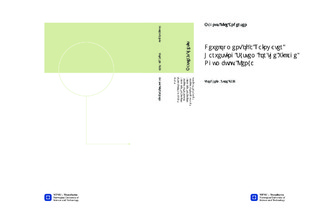Development of a Rainwater Harvesting System for the Village Ngumbulu, Kenya
Master thesis
Permanent lenke
http://hdl.handle.net/11250/241944Utgivelsesdato
2014Metadata
Vis full innførselSamlinger
Sammendrag
This report shows the development process of a rainwater harvesting system for the village Ngumbulu in the mid-eastern Kenya. The report is sectioned into 5 parts:Part 1 AboutThis part gives an overview of the project itself with goals and methods set to use in the development process. The focus lies primarily on participatory design and to develop the product in a sensible and sustainable way.Part 2 - MappingThe mapping part gives a thorough introduction to the area in question showing existing water sources and the current situation. Thereafter a user analysis is performed showing their demands and desires towards the final product. The primary needs are related to cheaper alternatives, local production possibilities and knowledge about rainwater harvesting in general. Resources available and technological aspects of rainwater harvesting are also presented to get a complete overview before developing concepts.Part 3 Development processThis is the actual concept development part where several applicable options are explored and evaluated. Concepts were divided into two separate systems, one for those with iron sheet roofs, and one for those who have not. The final concepts were thereafter prototyped and tested in Ngumbulu.Part 4 SolutionsThe final solutions are here explained and elaborated on, both in terms of function and usage but also with directions of how to manage and bring the solutions forward. Installation and manufacturing manuals have been made and presented on the proposed solutions.Part 5 AssessmentsThis chapter sums up the previous chapters also giving reflections and possibilities for the future. In this chapter there is also a toolkit for use in similar projects relating to the actual conduct of development projects in marginalized communities.
